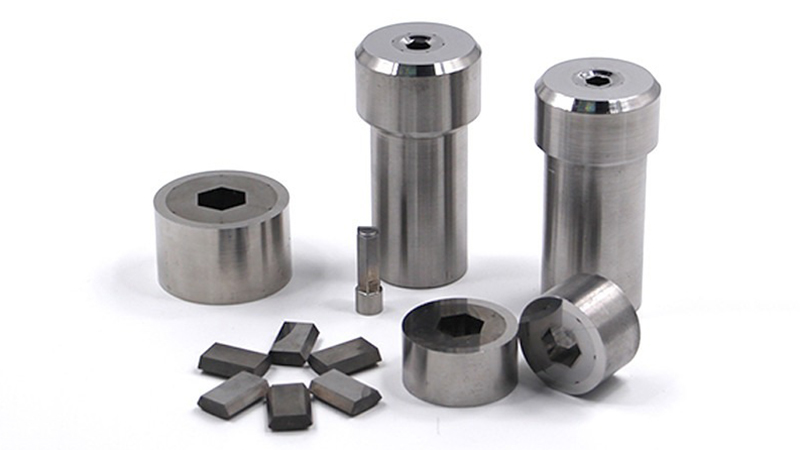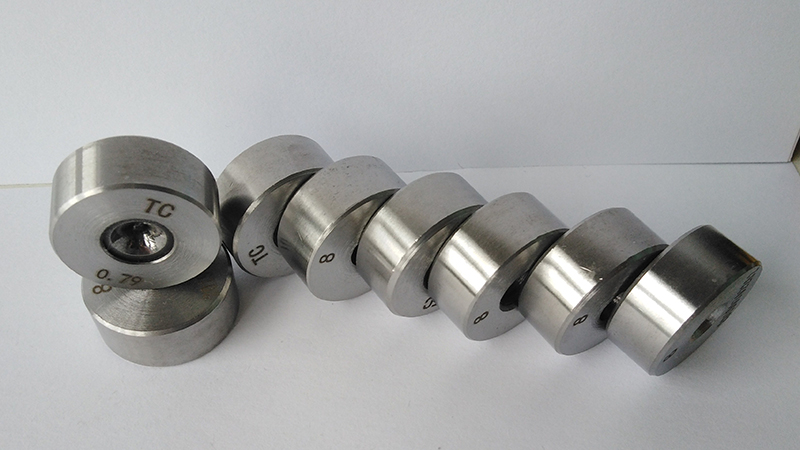In the world of high-volume fastener production, tungsten carbide cold heading dies stand out as one of the most critical tools in ensuring precision, durability, and cost efficiency. Whether you are producing bolts, screws, nuts, or studs, the quality and performance of your heading dies directly impact your final product. In this article, we explore what makes tungsten carbide cold heading dies essential, their advantages over other materials, and how to choose the right die for your production needs.
What Are Tungsten Carbide Cold Heading Dies?
Tungsten carbide cold heading dies are precision-engineered tools used in the cold forming process of fasteners. In cold heading, a metal wire or rod is forced into a die cavity under high pressure without the application of heat, forming the desired shape through plastic deformation. This process relies heavily on the quality and hardness of the die, especially when forming high-tensile steel components.
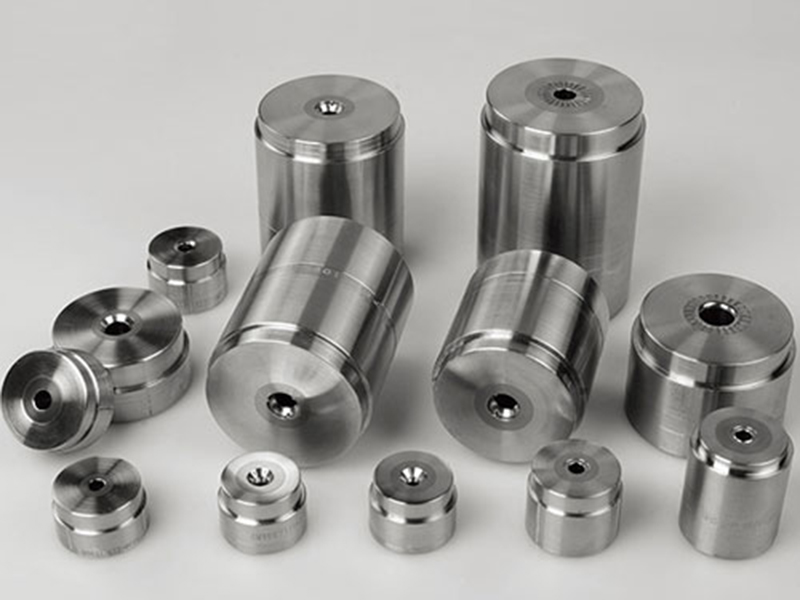
Tungsten carbide, a composite material composed of tungsten and carbon atoms bonded with a metal binder (commonly cobalt), is widely used due to its exceptional hardness, abrasion resistance, and wear life. These properties make it the ideal choice for enduring the extreme pressure and stress involved in cold heading operations.
Why Choose Tungsten Carbide for Cold Heading Dies?
1. Superior Hardness and Wear Resistance
Tungsten carbide is nearly twice as hard as steel and maintains this hardness even under high pressure and mechanical stress. This means tungsten carbide cold heading dies have a much longer service life compared to tool steel dies. Fewer replacements translate to lower tooling costs and reduced downtime.
2. Dimensional Stability
In fastener production, maintaining tight tolerances is essential. Tungsten carbide dies provide excellent dimensional stability, ensuring consistent part quality throughout long production runs. This consistency is crucial for industries such as automotive, aerospace, and construction, where reliability is non-negotiable.
3. High Thermal Conductivity
Even though cold heading is performed without external heat, the process still generates friction-induced heat. Tungsten carbide’s high thermal conductivity helps dissipate this heat more effectively, reducing the risk of thermal fatigue and premature tool failure.
4. Chemical Resistance
Tungsten carbide is resistant to most acids and industrial fluids. This makes it suitable for use in harsh environments and with difficult-to-process materials like stainless steel or alloy steels.
Applications of Tungsten Carbide Cold Heading Dies
Tungsten carbide cold heading dies are used across a wide range of industries:
Automotive Industry: For producing high-strength bolts, nuts, and fasteners used in engines, suspensions, and chassis.
Aerospace Sector: For precision screws and studs that must meet rigorous standards.
Construction: For manufacturing large-diameter bolts and anchor studs for structural applications.
Consumer Electronics: For micro screws and fasteners that require fine tolerance and smooth finish.
Types of Tungsten Carbide Cold Heading Dies
Several types of dies are commonly used depending on the fastener type and manufacturing step:
1. Punch Dies
These are used to create the head of the fastener. Tungsten carbide punches withstand high impact forces and help maintain shape accuracy.
2. Extrusion Dies
These reduce the diameter of the fastener body while elongating it. Tungsten carbide’s abrasion resistance is crucial here.
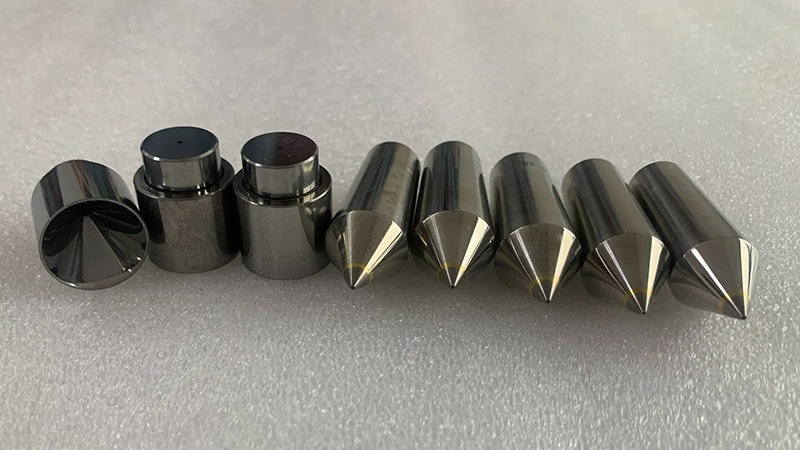
3. Trimming Dies
Used to trim excess material post-heading. Tungsten carbide trimming dies ensure clean, burr-free surfaces.
4. Thread Rolling Dies
Although thread rolling usually uses steel, pre-thread dies or shaping tools made from tungsten carbide can improve tool longevity, especially in high-volume runs.
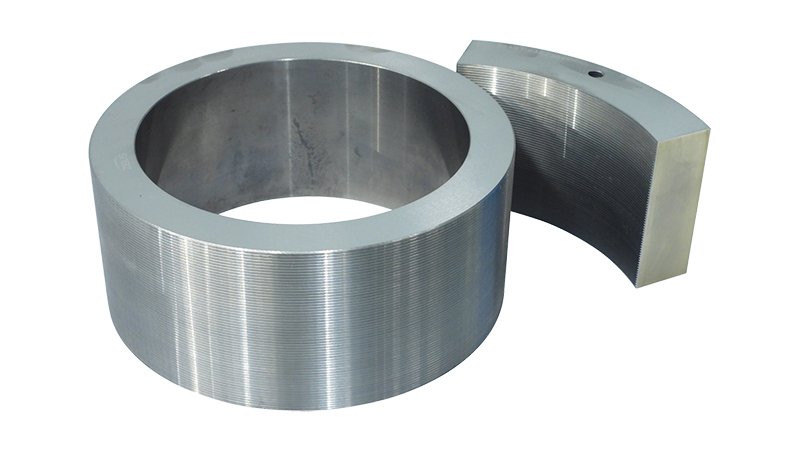
Key Factors When Choosing Tungsten Carbide Cold Heading Dies
When selecting tungsten carbide cold heading dies, consider the following factors:
1. Grade of Tungsten Carbide
Different grades vary in hardness, toughness, and binder content. For example, a high-cobalt content grade provides more toughness but slightly less hardness, ideal for complex shapes or high-impact applications.
2. Coating and Surface Treatment
Some dies come with coatings such as TiN, TiCN, or DLC to further improve wear resistance, reduce friction, and extend tool life.
3. Precision and Tolerance
Ensure the die meets your dimensional requirements. Even small deviations can lead to poor part quality or increased tool wear.
4. Compatibility with Lubrication
Cold heading requires effective lubrication to minimize die wear. Ensure your die material and surface finish are compatible with your lubricant system.
How to Extend the Life of Tungsten Carbide Cold Heading Dies
Even though tungsten carbide is highly durable, proper maintenance and handling are essential to maximize tool life:
Use proper lubrication during operation to reduce friction.
Avoid impact loading or sudden changes in pressure that can cause cracks.
Regularly inspect dies for wear or micro-cracks and replace before failure.
Store dies properly in a clean, dry environment to prevent corrosion or accidental damage.
Common Challenges and Solutions
1. Die Cracking
This may result from improper alignment, excessive impact force, or insufficient die clearance. Solution: Optimize die design and ensure proper machine setup.
2. Premature Wear
Often due to inadequate lubrication or using an incorrect carbide grade. Solution: Review lubrication system and die specifications.
3. Chipping at the Entry Point
This happens when hard wire materials or misaligned feeding damage the die. Solution: Improve wire preparation (e.g., chamfering) and ensure precise feeding.
The Future of Tungsten Carbide Cold Heading Dies
With growing demand for lightweight, high-strength fasteners in EVs, aerospace, and advanced infrastructure, the use of tungsten carbide cold heading dies will continue to rise. Innovations in carbide composition, nano-coatings, and additive manufacturing are expected to push the performance boundaries even further.
Conclusion
Tungsten carbide cold heading dies are indispensable for manufacturers seeking durability, precision, and cost efficiency in high-volume fastener production. Their unmatched hardness, resistance to wear, and ability to maintain tight tolerances make them a superior choice over traditional materials.
Looking for premium tungsten carbide cold heading dies? Contact us today to get expert recommendations and custom solutions tailored to your production needs.

